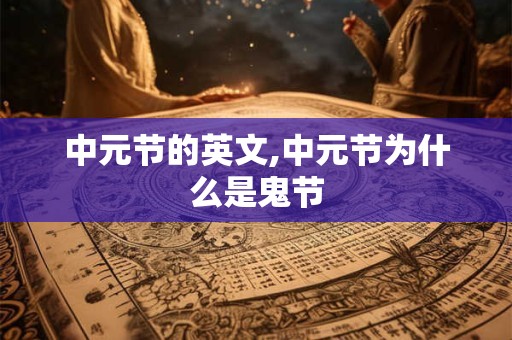In the heart of summer, as the sun sets earlier and the nights grow longer, the Mid-Autumn Festival, also known as the Ghost Festival, takes place. This traditional Chinese festival, celebrated on the 15th day of the seventh lunar month, holds a unique place in the hearts of many, as it is a time when the living honor their ancestors and pay respects to the spirits of the departed.
The Origin of the Ghost Festival
The Ghost Festival, known as "Zhongyuan Jie" in Chinese, has its roots in ancient Chinese folklore and mythology. According to legend, the festival was established to commemorate the spirit of the Yellow Emperor, who was believed to have died on this day. It is also a time to honor the spirits of ancestors and to provide a safe passage for wandering ghosts.
The Concept of Ghosts and Spirits
In Chinese culture, ghosts and spirits play a significant role in the belief system. It is believed that after death, the soul of a person does not immediately leave the earthly realm. Instead, it lingers, often returning to the world of the living to visit their loved ones. The Ghost Festival is a time when these spirits are believed to be more active and visible.
The Rituals and Practices

The Ghost Festival is marked by various rituals and practices that are designed to honor the spirits and ensure their safe return to the afterlife. Here are some of the key activities:
Offering to the Ancestors
One of the most important rituals is offering food and other items to the ancestors. Families gather to prepare a feast, often including their favorite dishes, and set up an altar with offerings such as incense, paper money, and other symbolic items. The belief is that the ancestors will enjoy these offerings and, in return, bring good fortune and blessings to the living.
Burning Paper Money
Another common practice is the burning of paper money. This is believed to provide the spirits with currency in the afterlife, ensuring they have the means to live comfortably. The paper money is often burned in front of the altar or in designated areas, and the smoke rises into the sky, symbolizing the transfer of wealth to the spirits.
Lighting Lanterns
Lanterns are also an integral part of the Ghost Festival. People light lanterns and release them into the sky, a symbol of guidance for the spirits as they navigate the afterlife. The lanterns, often decorated with intricate patterns and symbols, are a beautiful sight as they float away, carrying the hopes and prayers of the living.
Performing Ghost Plays
In some regions, ghost plays are performed as part of the festival. These plays, often incorporating elements of Chinese opera, are designed to entertain the spirits and distract them from any mischief they might be planning. The performances are a mix of comedy and drama, and are always accompanied by a lively audience.
The Cultural Significance
The Ghost Festival is not only a time for honoring the dead but also a time for reflection and remembrance. It serves as a reminder of the cyclical nature of life and the importance of maintaining a connection with our ancestors.
The Modern Perspective
In today's fast-paced world, the Ghost Festival may seem like an ancient tradition that has little relevance to modern life. However, for many, it remains an important part of their cultural heritage. It is a time to pause and appreciate the rich tapestry of Chinese history and the values that have been passed down through generations.
Conclusion
The Mid-Autumn Festival, or Ghost Festival, is a time when the living honor the dead and the past. It is a festival filled with rituals, beliefs, and practices that have been passed down through generations. While the world around us continues to change, the Ghost Festival remains a steadfast reminder of our connection to the past and the importance of respecting and honoring those who came before us.
